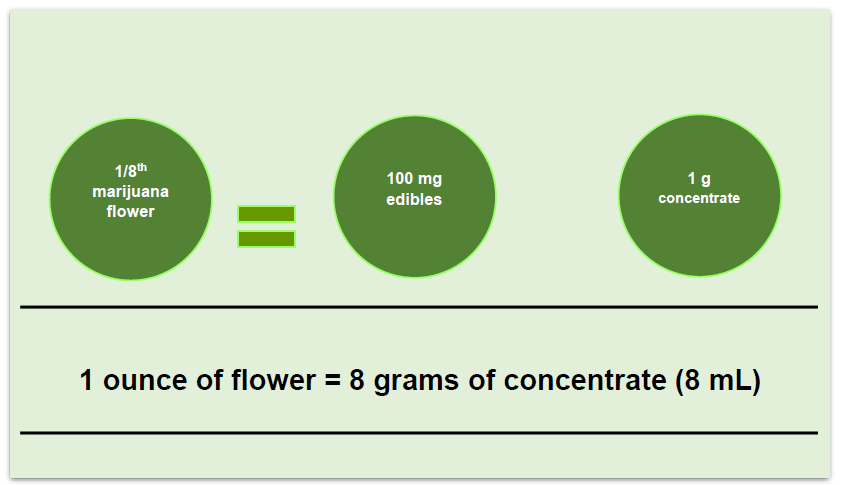Marijuana Measurements & Sizes
Marijuana measurements can be confusing, but the department is here to assist.
Let’s take a deeper dive into marijuana measurements.
Flower is typically sold in grams (g) and ounces (oz).
| Measurement Term | Metric (SI) Equivalent | Approximate Comparison Size |
|---|---|---|
| 0.5 gram (g) | 500 milligrams (mg) | One (1) U.S penny |
| 1 gram (g) | 1000 milligrams (mg) | One (1) grape |
| 1/8 ounce (oz) | 3.5 grams (g) | One (1) kiwi |
| 1/4 ounce (oz) | 7 grams (g) | One (1) apple |
| 1/2 ounce (oz) | 14 grams (g) | One (1) grapefruit |
| 1 ounce (oz) | 28.35 grams (g) | One (1) coconut |
If a specific strain of marijuana flower (ex. Blue Dream) contains 25% THC, then one gram (1 g) of that marijuana strain would contain 250 mg (or 0.25 g) THC, as demonstrated in the example below:
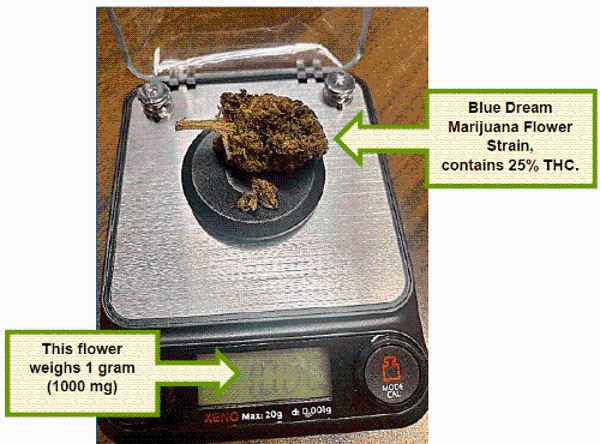
The flower pictured above contains 250 mg/0.25 g THC.
Concentrates and extracts are typically sold in half grams (.5 g) and full grams (1 g).
Concentrates and extracts tend to be more potent than marijuana flower and other marijuana products.
| Measurement Term | Metric (SI) Equivalent | Approximate Comparison Size |
|---|---|---|
| 0.5 gram (g) | 500 milligrams (mg) | One (1) pumpkin seed |
| 1 gram (g) | 1000 milligrams (mg) | One (1) tablet-sized piece of gum |
Note: In Montana, adult consumers have single package limits of no more than 800 milligrams (mg). This is based off the amount of delta-9 THC concentration in the marijuana product, not the total potential psychoactive THC concentration, or Total THC concentration percentage (%).
If a concentrate contains 80% delta-9 THC, then it contains 800 milligrams (mg) of THC. Can you tell which one of these 1-gram cartridges (pictured below) contains the most amount of delta-9 THC?
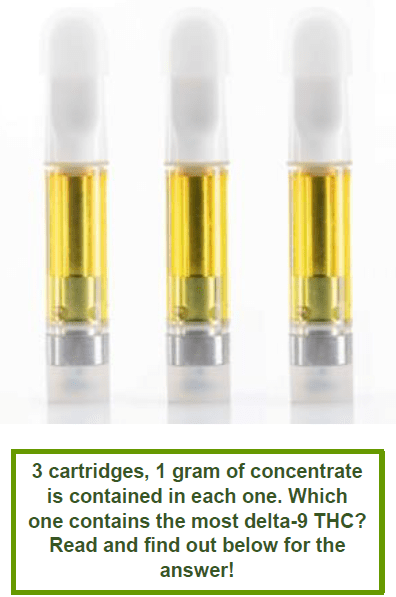
Hint: You can’t! You must review the individual product’s label to determine the specific amount of delta-9 contained. The higher the amount of delta-9, the more potent (stronger) the concentrate is.
To determine the amount of delta-9 THC, examine the THC percentage concentration (%) on the product’s label:
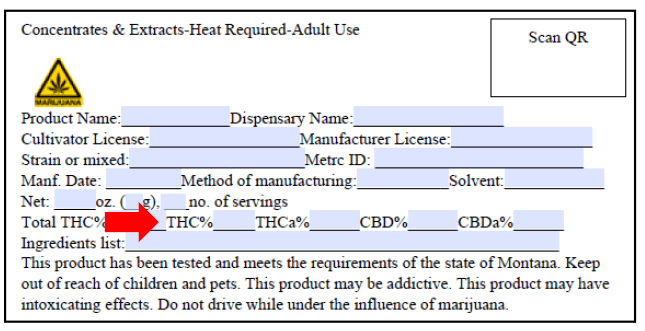
If the concentrate product is consumed (not inhaled or smoked), the consumer will still want to examine the THC percentage concentration (%) on the product’s label to determine the amount of delta-9 contained within the marijuana product.
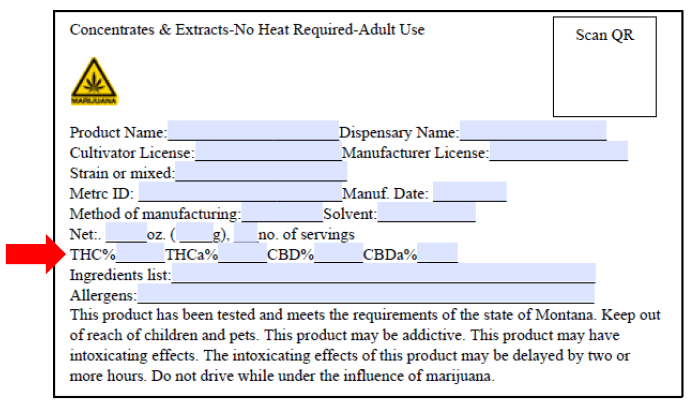 Sample product label for adult-use cannabis concentrates that require no heat. The label includes fields for product name, strain, manufacturing method, solvent, THC%, THCA%, CBD%, and CBDA%, as well as net weight, number of servings, and a QR code box. A red arrow highlights the 'THC%' field, indicating its importance for potency disclosure. A warning explains that intoxicating effects may be delayed by two or more hours, and users are advised not to drive while under the influence.
Sample product label for adult-use cannabis concentrates that require no heat. The label includes fields for product name, strain, manufacturing method, solvent, THC%, THCA%, CBD%, and CBDA%, as well as net weight, number of servings, and a QR code box. A red arrow highlights the 'THC%' field, indicating its importance for potency disclosure. A warning explains that intoxicating effects may be delayed by two or more hours, and users are advised not to drive while under the influence.
